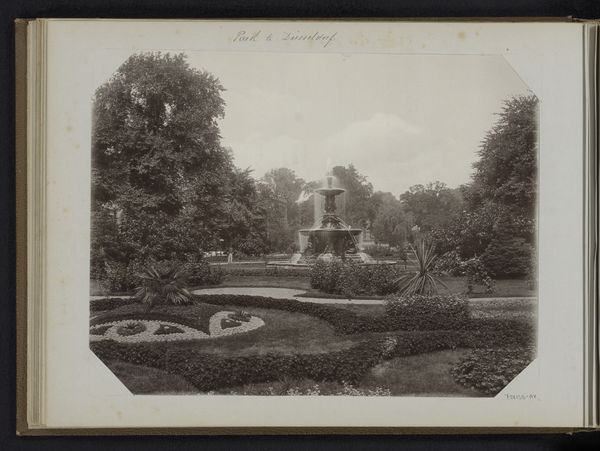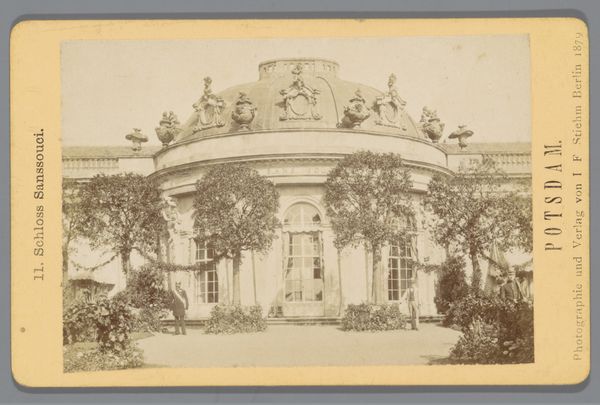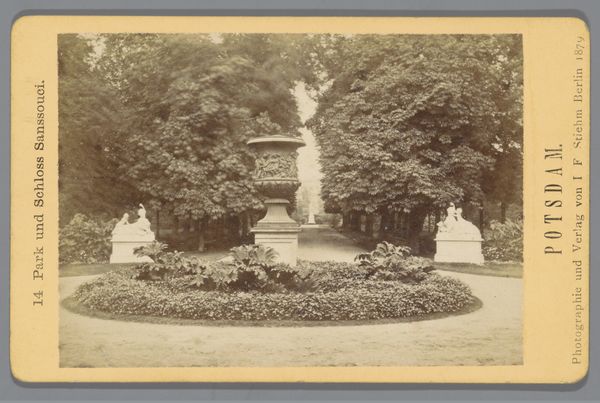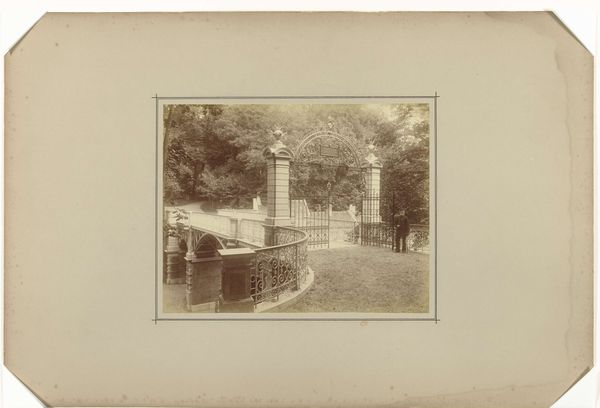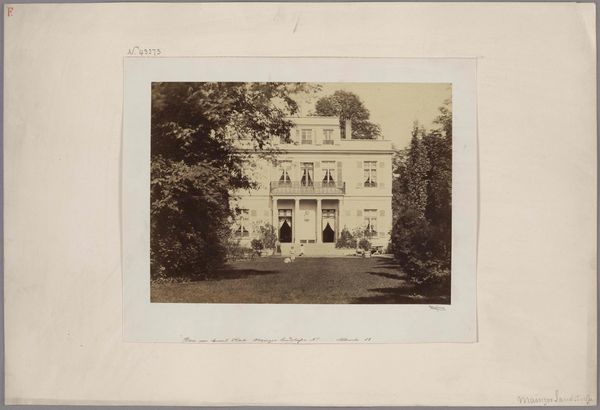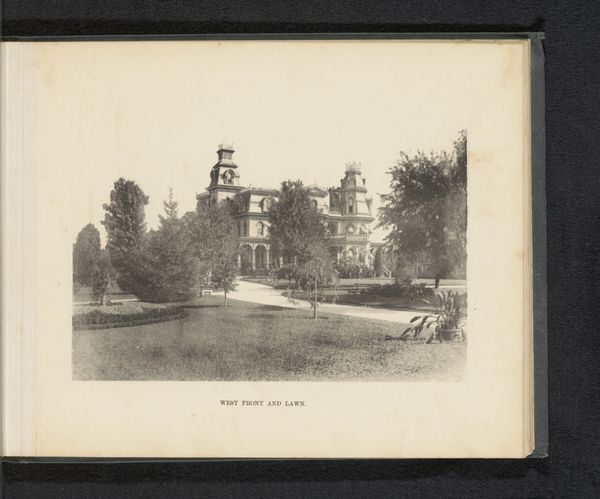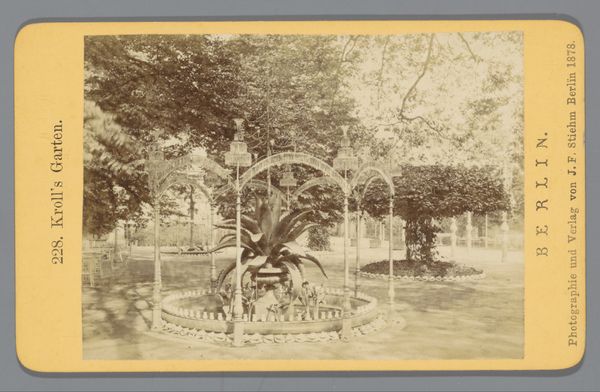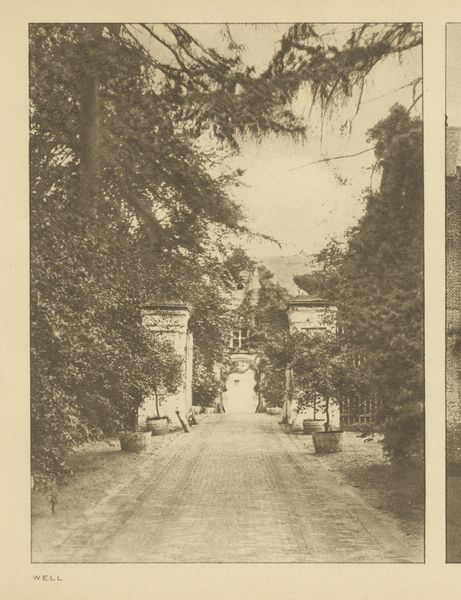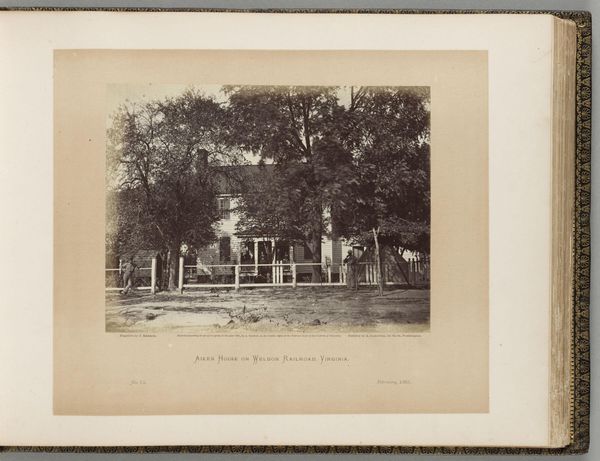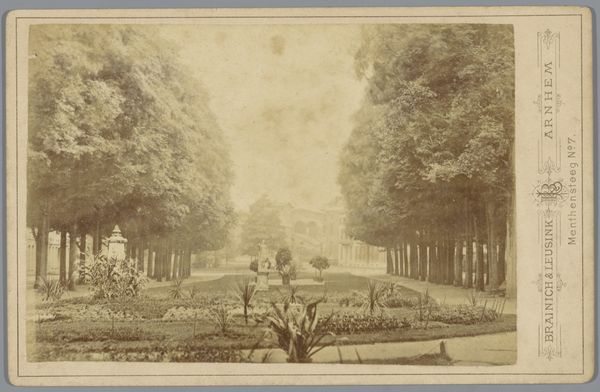
Dimensions: height 106 mm, width 68 mm
Copyright: Rijks Museum: Open Domain
Editor: Here we have "Fontein in de tuin van slot Sanssouci, Potsdam" a photograph by Siegfried Rosenthal, created sometime between 1855 and 1885. The sepia tone lends it a dreamlike quality, almost as if it were a scene from a play. What sociopolitical factors may have influenced this representation? Curator: That's an astute observation. This photograph, while seemingly a tranquil landscape, offers a window into the complex social hierarchy of 19th-century Prussia. Neoclassicism, prominent here, often served as a visual language for power and order, harking back to perceived golden ages. Consider the placement of the fountain; how does it function as a symbol of control over nature and, by extension, society? Who was invited to view this "dreamlike" space and what societal messages are sent to the public. Editor: That's an interesting point! The fountain does dominate the foreground. So, in thinking about power, would you say this photo also participates in constructing a specific narrative around the Prussian identity? Curator: Absolutely. The meticulous landscaping and architectural details evoke a sense of national pride and cultivated refinement, echoing Enlightenment ideals of reason and progress. It begs the question: whose reason and whose progress? Understanding that photography itself, in its early days, was primarily accessible to the bourgeoisie gives a different framework of who has access and is represented. Editor: It sounds like reading this image goes beyond the purely aesthetic then, towards an exploration of the values and power dynamics embedded within its composition. Thank you for opening my eyes. Curator: My pleasure. By critically examining these seemingly "beautiful" scenes, we unveil the narratives and ideologies that shaped the past, hopefully offering opportunities for change in the future.
Comments
No comments
Be the first to comment and join the conversation on the ultimate creative platform.

